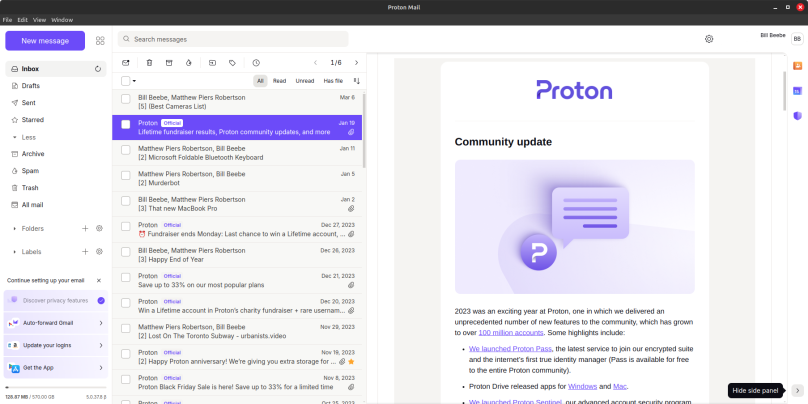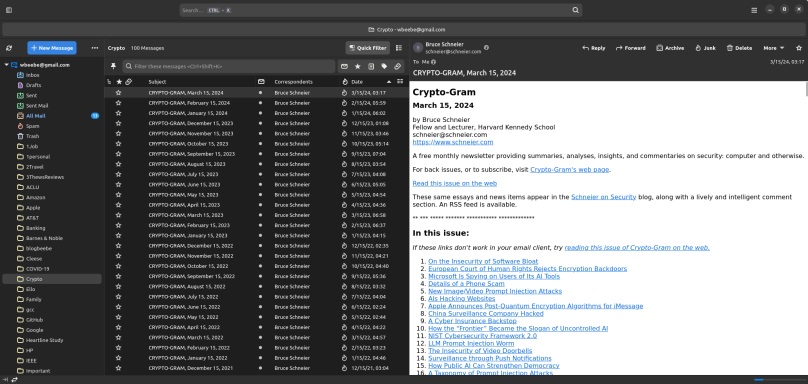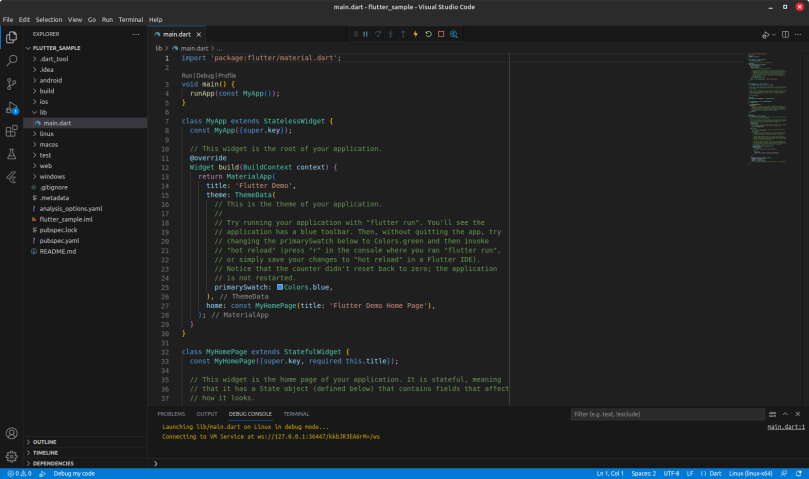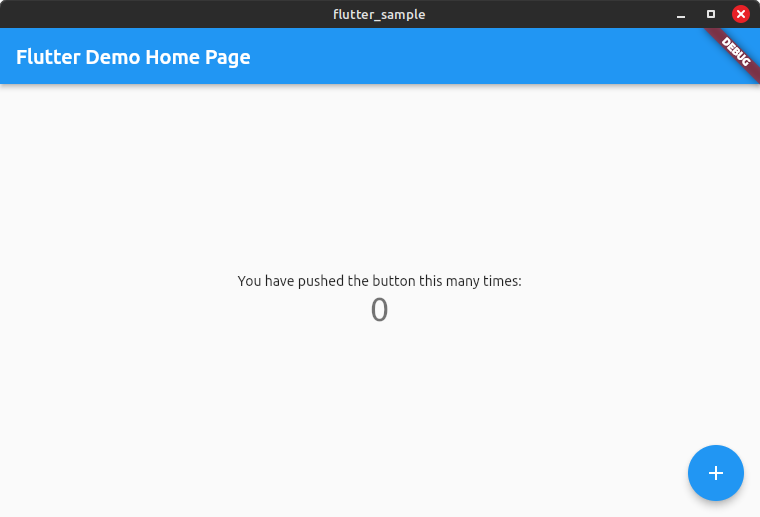Proton Mail finally released a beta of its web application as a stand-alone application for the Linux desktop earlier this week. After being gently prompted by the website when I last opened web-based Proton Mail, I downloaded the stand-alone deb file and installed it.
This is a beta release, so it’s not functionally complete. This means, for example, I can’t select a dark scheme for the application. I have done this on the web-based version. Being a beta there are other, minor (to me) missing features, but overall it works pretty much the same way as the web-based side of things, at least as far as I can tell.
The biggest issue for me is speed. The stand-alone Proton Mail is slower, and at times notably slower than the in-browser application, and I have to wonder if it’s because web browser Proton has the remote server doing most of the heavy lifting of mail processing. I’m also now wondering if Proton Mail is based on Google’s Flutter framework, and if the desktop version isn’t a recompile of the web-based version. I’ve dabbled with Google’s Flutter in the past and done something similar, i.e. built a web application using Flutter’s Visual Studio Code plugin and then flipped the switch to build a stand-alone version. I wasn’t all that impressed at the time. If this is how we got Proton Mail desktop then I’m still not all that impressed with Flutter.
This is the second mail desktop application I’ve installed and tried on the Linux desktop. The first is Thunderbird, the spin-off from Netscape Navigator’s web browser suite from back in the early 2000s.
As you can see with the Thunderbird example above, I like my dark themes. I also like with Thunderbord how I can compress folder listings into one mail entry per line, unlike Proton Mail (both web and application) that will only shrink down to two lines/entry, via what is called Density in the Settings panel. But that’s a minor nit, compared to other issues. While I still have Thunderbird installed and fire it up on occasion, my biggest complaint with Thunderbird and the reason I seldom use it is how much in resources it uses when it’s up and running on my system. I’m better off reading my Google mail in a browser than in Thunderbird, even though it means I have a browser with may open tabs being dragged along. My primary browser of choice on my Linux Mint desktop is Firefox (123.0.1), which in spite of the lies the many Firefox haters like to spew, runs quite efficiently and performant for me.
While I always recommend Proton Mail to whomever asks, I can’t recommend these newest Proton Mail desktop applications. In the third decade of the 21st century, working with mail in a browser tab is no longer the issue it was in the first decade of the 21st century. We have come a very long way in that regard. Going back to a stand-alone mail application wasn’t something I was asking for, and looks too much like a step backwards.





You must be logged in to post a comment.